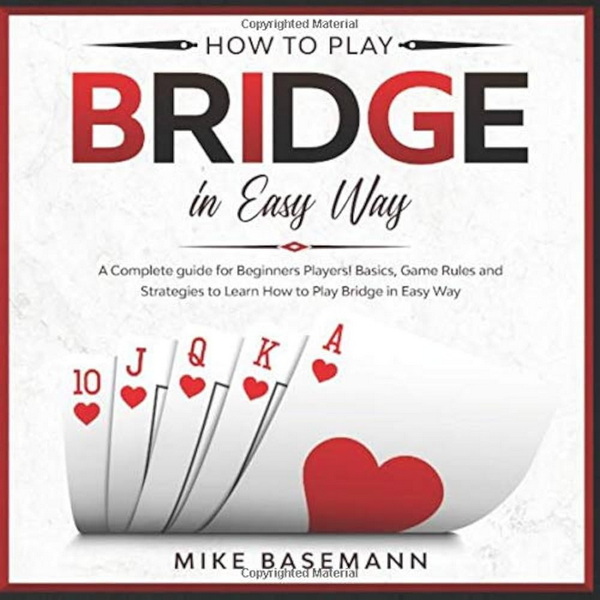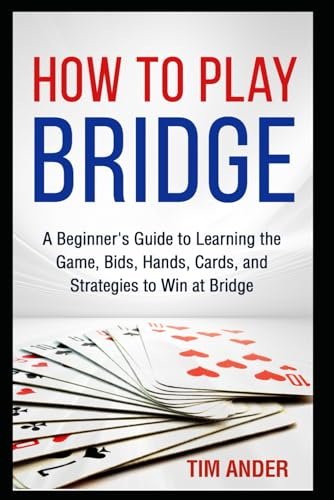Content Menu
● Overview of Bridge
● The Phases of Bridge
● Dealing the Cards
● Bidding Process
>> Example of Bidding:
● Playing the Hand
● Scoring in Bridge
● Strategies for Playing Bridge
● Common Terms in Bridge
● Conclusion
● Frequently Asked Questions
>> 1. What are some basic rules for beginners in bridge?
>> 2. How do I score points in bridge?
>> 3. Can I play bridge with more than four players?
>> 4. What should I do if I don't understand my partner's bid?
>> 5. How can I improve my bridge skills?
● Citations:
Bridge is a fascinating card game that combines skill, strategy, and teamwork. It is typically played by four players divided into two partnerships. The game consists of several phases: dealing, bidding, playing the hand, and scoring. This article will guide you through the rules and strategies of bridge, ensuring you have a comprehensive understanding of how to play.

Overview of Bridge
Bridge is played with a standard 52-card deck. The players are referred to as North, South, East, and West. North and South form one partnership, while East and West form the other. Each player is dealt 13 cards, and the objective is to win as many tricks as possible.
The Phases of Bridge
Bridge consists of four main phases:
- Dealing: The cards are shuffled and dealt one at a time to each player until everyone has 13 cards.
- Bidding: Players bid for the number of tricks they believe they can take. The highest bid becomes the contract.
- Playing: Players play their cards in an attempt to win tricks based on the contract established during bidding.
- Scoring: Players tally their points based on the number of tricks won and the contract fulfilled.
Dealing the Cards
To start a game of bridge, follow these steps:
1. Shuffle the Deck: One player shuffles the cards.
2. Cutting the Deck: The player to the dealer's left cuts the deck.
3. Dealing: The dealer distributes the cards one at a time in a clockwise direction until each player has 13 cards.
4. Sorting Cards: Players should sort their hands by suit and rank for easier management during play.
Bidding Process
The bidding phase is crucial as it determines which partnership will try to fulfill a contract. Here's how it works:
- The dealer makes the first call, which can be a bid or a pass.
- Bids must indicate a number of tricks above six (the minimum bid is one).
- Players can continue to bid or pass in clockwise order until three consecutive players pass.
- The highest bid becomes the final contract, and the player who made that bid becomes the declarer.
Example of Bidding:
- Player A bids 1♥ (indicating they expect to win seven tricks with hearts as trump).
- Player B passes.
- Player C bids 2♠ (expecting to win eight tricks with spades as trump).
- Player D passes.
- If Player C's bid is not outbid, they become the declarer for that hand.

Playing the Hand
Once bidding concludes, it's time for play. The declarer plays both their own cards and those of their partner (the dummy). Here's how this phase unfolds:
1. Opening Lead: The player to the left of the declarer leads the first card (the opening lead).
2. Following Suit: Players must follow suit if they can; if they cannot, they may play any card.
3. Winning Tricks: A trick is won by either:
- The highest card in the suit led.
- The highest trump card if any trumps are played.
4. Continuation: The winner of each trick leads into the next one until all 13 tricks have been played.
Scoring in Bridge
Scoring in bridge can be complex but is essential for understanding who wins:
- Points are awarded based on the contract level and how many tricks were won.
- For minor suits (clubs and diamonds), each trick above six is worth 20 points.
- For major suits (hearts and spades), each trick above six is worth 30 points.
- No-trump contracts score differently, with additional bonuses for fulfilling contracts or overtricks.
Strategies for Playing Bridge
To excel at bridge, players should consider various strategies:
- Communication with Partner: Use bidding conventions to convey information about your hand without revealing too much to opponents.
- Counting Tricks: Before playing, assess how many tricks you can realistically win based on your hand composition.
- Managing Trumps: If you have trumps, control them wisely by drawing out your opponents' trumps when advantageous.
- Defensive Play: As a defender, work closely with your partner to thwart the declarer's plans by signaling intentions through card play.
Common Terms in Bridge
Understanding bridge terminology is vital for effective communication during play:
- Declarer: The player who wins the bidding and plays both their hand and their partner's hand (the dummy).
- Dummy: The declarer's partner whose cards are laid face-up on the table after the opening lead.
- Trick: A round of card play where each player plays one card; four cards make up one trick.
- Trump Suit: A suit designated during bidding that beats all other suits when played.
Conclusion
Bridge is not just a card game; it's a blend of strategy, skill, and teamwork that offers endless opportunities for learning and improvement. Whether you're just starting or looking to refine your skills, understanding its phases—dealing, bidding, playing, and scoring—is crucial for enjoying this classic game.

Frequently Asked Questions
1. What are some basic rules for beginners in bridge?
Beginners should focus on understanding how to sort their hands, follow suit during play, and communicate effectively with their partner through bidding conventions.
2. How do I score points in bridge?
Points are scored based on fulfilling contracts during play; minor suits score 20 points per trick above six while major suits score 30 points per trick above six.
3. Can I play bridge with more than four players?
While bridge is traditionally played with four players in two partnerships, variations exist for larger groups or different formats like rubber bridge or duplicate bridge.
4. What should I do if I don't understand my partner's bid?
If you're unsure about your partner's bid meaning during play or bidding phases, it's acceptable to ask them for clarification after making an alert call about conventional bids.
5. How can I improve my bridge skills?
Improving at bridge involves practice—play regularly with different partners, study strategies from books or online resources, and participate in local clubs or tournaments for experience.
Citations:
[1] https://www.acbl.org/learn/
[2] https://www.britannica.com/topic/bridge-card-game/How-to-play-contract-bridge
[3] https://www.funbridge.com/how-to-play-bridge
[4] https://www.funtrivia.com/en/Hobbies/Bridge-5911.html
[5] https://www.dummies.com/article/home-auto-hobbies/games/card-games/bridge/bridge-for-dummies-cheat-sheet-208369/
[6] https://www.officialgamerules.org/card-games/bridge
[7] https://milanbridge.com/basic-rules-of-bridge/
[8] https://www.nofearbridge.co.uk/howtoplaybridge.php
[9] https://bicyclecards.com/how-to-play/bridge
































